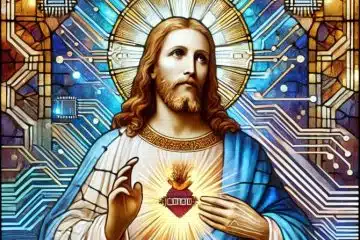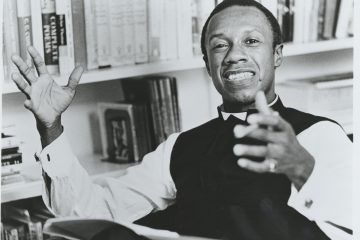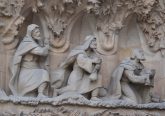Is Christmas simply a re-imagining of ancient pagan celebrations?
Denver Newsroom, Dec 13, 2020 / 04:58 am
‘Tis the season to be jolly, and, perhaps, to have one’s social media inundated with memes about Christmas being nothing more than a co-opted pagan holiday – maybe a winter solstice celebration – repurposed and baptized by Christianity.
“There are dozens of religions in mythology that have had visits by wise men, kings who’ve killed children to stop the new king being born…there’s a great deal of Christianity that is traditional, and however wonderful people think the story is, it’s frankly not original,” Stephen Fry, an actor and self-proclaimed atheist, said in a mid-2000s Christmas episode of the British comedy show, QI.
In the episode, Fry repeats some popular claims about Christmas and its origins, including that the date of Christmas was stolen from pagan holidays, and that many of Christ’s characteristics – that he was born of a virgin, is the son of God, that he and died and rose to save us from sin – were simply borrowed from pagan gods and traditions that pre-date Christ.
Is there any truth to these claims? CNA spoke with several Catholic academics to find out.
Dr. Michael Barber, an associate professor of Scripture and theology at the Augustine Institute in Denver, Colo., said there is some truth to the idea that Christians “‘baptize’ pagan ideas.”
One example, he noted, is the wedding ring, a tradition with origins in ancient Roman, Greek and Egyptian customs that pre-date Christianity. Today, Catholic weddings include the blessing and exchange of wedding rings, as a symbol of the commitment of marriage, even though this did not originate as a Christian idea.
But the questions of pagan links to Christmas in particular are something Barber has spent much time studying, as he is planning to publish a new book entitled “Christmas: What Every Catholic Should Know.” It’s a part of a series that includes the book “Salvation: What Every Catholic Should Know.”
“[T]here are also elements of the traditional Christmas celebration that are borrowed from pagan cultures. We are not quite sure how the tree, for example, became part of the Christmas scene but certainly there is nothing in Scripture that establishes it with Christmas,” he said.
Dr. Mark Zia, a professor of sacred theology at Benedictine College in Kansas, said Christianity “recognizes, appreciates, and incorporates into her own ‘Christian culture’ anything that is good, true, and beautiful, even if these things have their origins in pre-Christian religions or cultures.”
However, he added, the Church stands by the historicity of the person of Christ and the events of the Gospels.
“Since the four Gospels are the historical accounts of what Jesus truly said and did while on earth, there is no room for the suggestion that they contain ‘myths’ or ’embellishments’ or ‘exaggerations’ about the power or identity of Jesus,” he said.
“The Gospels clearly teach that Jesus identified Himself as the Son of God, that his audiences understood that he claimed to be God, that eyewitnesses observed his great miracles of power, and ultimately he truly rose from the dead. Unlike all pagan myths, there is nothing mythic or fictitious in the life of Jesus.”
The origin of claims linking Jesus to pagan gods
Barber said many of the claims about Christmas being a pagan holiday, and Jesus being compared to pagan gods, come from the 1999 book “The Christ Conspiracy: The Greatest Story Ever Sold,” written under the pseudonym S. Acharya.
In the book, Acharya argues that Jesus was invented as a culmination of various gods, including the ancient Roman gods of Mithras, Hercules, and Dionysus, in order to unite the Roman empire with one state-sanctioned religion.
“The author is actually D. M. Murdock who never earned advanced degrees and was not an academic,” Barber said. “Her work is in some ways like that of certain 19th century writers who also made wild claims that could not be substantiated by evidence. Murdock’s book has been roundly dismissed by scholars. Even scholars known for skepticism towards the historical reliability of the Gospels such as Bart Ehrman have dunked the books claims.”
Barber noted that Ehrman wrote in his 2012 book, “Did Jesus Exist”: “In short, if there is any conspiracy here, it is not on the part of ancient Christians who made up Jesus but on the part of modern authors who make up stories about the ancient Christians and what they believed about Jesus.”
One example of a god that Jesus is sometimes compared to is that of Mithra, a pagan god of Iranian origin who was also a popular Roman god until the 4th century. According to multiple sources, Mithra (or Mithras) was considered a god of light (or the sun), justice, and loyalty, and for this reason devotion to him was encouraged by emperors at the time. A popular Mithrain ceremony included the sacrifice of a bull, according to Encyclopedia Britannica.
Mithras is often included as one of a number of “crackpot theories” that Jesus was merely an idea that came from pagan gods, Barber said, adding that any parallels that may exist between Jesus and Mithras or other pagan gods are incidental, and historically flimsy.
Christmas and December 25: Which came first, the pagan or the Christian?
There are two major theories as to why Christmas falls on December 25, Barber said, though the long and short of it is that Christians do not know for certain the exact birthday of Jesus.
The first theory dates back to 1905, when German scholar Hermann Usener posited that December 25 was adapted by Christians as the date for Christmas because it had been the birthday of the sun god, Sol Invictus.
According to Barber, Usener claimed that Emperor Aurelian established Sol Invictus “as the official god of the Roman empire in 274 and established his feast day as December 25. Christians took elements from this religion and reinterpreted them, applying them to Jesus.”
Usener also claimed that Constantine changed December 25 from a celebration of this pagan god to the celebration of Christmas in order to Christianize the empire.
However, Barber said, “our earliest evidence for a December 25 feast day of a pagan god dates to the fourth century – and the same document also already mentions December 25 as Jesus’ birthday. Indeed, it is just as possible that the Christians’ celebration of Jesus’ birth was copied by the pagans. In short, the claim that Christianity came out of the feast day of Sol Invictus is without evidence.”
Zia noted that some sources even date the celebration of the Christian Christmas on December 25 before any records indicate any pagan celebrations on that same day.
“Historical sources tell us that the pagan festival of Saturnalia in honor of the sun god was celebrated in Rome, beginning in the end of the third century AD, and held on December 25,” Zia said.
“Given that the date for the celebration of Christmas was not standardized until the fourth century, the assumption was that the pagan feast came first,” he said, and that Christmas was later set on this date to “counter-act” this pagan festival.
But there are reasons to doubt this account, he said.
“The earliest reference to the birth of Christ on December 25 of which I am aware comes from St. Hippolytus (d. 235), whose writings predate by half a century the first celebration of the pagan feast in honor of the sun god,” he said.
St. Hippolytus wrote in a piece that is historically “accepted as genuine that Jesus was born nine months after the creation of the world, a date which the early fathers identified as March 25. Thus we have a clear reference to Jesus’ birth on December 25 before there ever was established the cultic celebration of the sun god in Rome,” Zia said.
Barber added that there are other reasons to believe that it was in fact the pagans who were copying the Christians, in this and other ways.
“Justin Martyr (in First Apology 66) accuses the followers of Mithras of imitating the eucharistic practice of the Church,” he said.
The Church fathers’ understanding of March 25 as the date of the creation of the world is also a key to understanding the theological view of why Christmas is on December 25, said Fr. Michael Witczak, associate professor of liturgical studies and sacramental theology at The Catholic University of America in Washington, D.C.
As the understood date of the creation of the world, March 25 is also fittingly celebrated as the feast of the Annunciation, or the day that Mary conceived Jesus by the power of the Holy Spirit, he said.
“December 25 is related to March 25. So March 25th is the celebration of the feast of the Annunciation…and March 25th is nine months before December 25,” Witczak said.
Witczak added that the Church does not know for certain that these were the exact dates on which these events occurred, as these exact dates are not mentioned in Scripture, and we have few early historical documents on them. Even the year thought to be that of Jesus’ birth may be off by a few years, he said.
But understanding Jesus as an historical person who actually existed, and understanding him in his divinity, are two different things, he added.
“I don’t think any good historian would doubt the historicity of Jesus Christ or Saint Paul,” Witczak said, “but knowing that Jesus was a historic figure (versus) believing that he’s the second Person of the blessed Trinity…it’s a matter of faith.”
Even if December 25 as a date for the celebration of Christmas were taken from a pagan tradition, Witczak said, it does not negate the person of Christ.
If December 25 was originally a festival of a sun god, for example, “as a Christian, I would say, but the divinity is not the sun, the divinity is the creator God who created the world and everything in it. This is revelatory of the presence of God in our life and in our world,” he said.
“When Pope Gregory The Great sent St. Augustine to England to bring the faith to the British people, he gave him advice about how to consecrate pagan temples to use as a Christian Church,” Witczak said.
“In Mexico, there are some aspects of the way that they celebrate All Souls Day, the Dia de los Muertos, that are reminiscent of Aztec customs. The image of Our Lady of Guadalupe, she’s dressed in Aztec clothes and the belt that she wears is the belt that a pregnant woman would have worn in pre-Christian days in the Aztec world,” he said.
“So this dynamic of taking over things from a previous culture and then using it for Christian purposes…it’s kind of part and parcel of the way that the Church operates,” he said.
Zia said the claims of strong links between Jesus and paganism tell of a lack of catechesis among believers, and a lack of faith among non-believers.
In reality, “there is ample room to include pre-Christian elements in the celebration of our Christian holidays” Zia said, and “the core purpose of each specific Christian holiday is utterly new and not a borrowing from pagan holidays.”
Zia encouraged anyone who was really interested in the parallels between Jesus and any number of pagan gods to do their own research, and not rely on the claims of books such as Acharya’s.
“(D)epending on how much time and effort one puts into the task, one can find occasional parallels between Jesus and just about any pagan deity from any culture,” Zia said.
“Yet such comparisons are too few and too weak to suggest that Jesus is simply the ‘Christian’ version of these former pagan beliefs. When we look at the entire context of the identity, life, mission, and teachings of Jesus, then it becomes abundantly clear that he is utterly unique in the history of the world,” he said. “It is for this reason that Jesus – and only Jesus – could boldly proclaim, ‘Behold, I make all things new!'”













